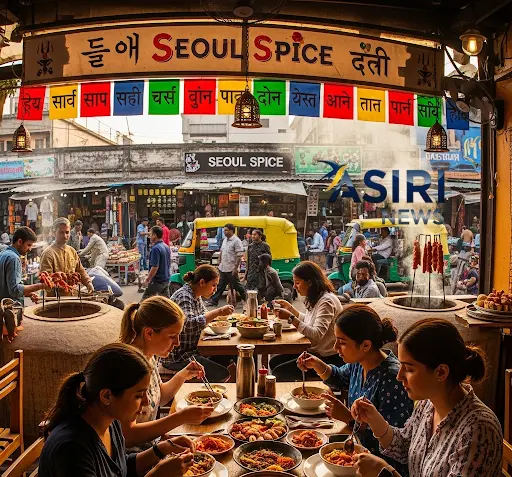In a culinary phenomenon that has moved from a niche interest to a mainstream trend, Korean cuisine is rapidly taking over India’s food landscape. What began as a subculture obsession with K-dramas and K-pop has evolved into a full-fledged gastronomic movement, reshaping dining habits and creating a multi-million-dollar industry. The trend is especially prominent among Indian millennials and Gen Z, who are driving a wave of new food exploration.

The rise of Korean cuisine is directly linked to the massive popularity of the Hallyu or “Korean Wave,” which swept across India during the pandemic. As millions of Indians binge-watched Korean dramas on streaming platforms, they were introduced to a vibrant and communal food culture. Scenes of characters bonding over sizzling barbecue, sharing bubbling pots of stew, and slurping down bowls of ramen made these dishes aspirational. The trend has been a boon for food delivery platforms, with one major player, Swiggy, reporting a 50% year-on-year growth in Korean food orders.
The most popular Korean dishes in India offer a mix of familiar and exotic flavors that resonate well with the Indian palate. Ramen, often featured in K-dramas, has become a top-selling item, with brands like Samyang and Nongshim gaining immense popularity. Korean fried chicken, known for its crispy exterior and sweet-and-spicy gochujang sauce, has also become a massive hit. Other popular dishes include Bibimbap, a colorful mixed-rice bowl, and Tteokbokki, a chewy street food made of spicy rice cakes. The widespread availability of instant ramen and sauces, both online and in physical stores, has made it easier for fans to recreate their favorite dishes at home, further cementing the cuisine’s place in Indian households.
The trend has moved beyond major metropolitan areas, with a 59% year-on-year rise in Korean food orders from emerging cities like Surat, Vadodara, and Mysuru. This expansion signals a deeper cultural integration, supported by the opening of new Korean restaurants, cafés, and cloud kitchens across the country. Brands are also localizing their menus to cater to Indian tastes, with some offering fusion items like the “Korean McAloo Tikki Burger,” demonstrating a strategic effort to make the cuisine more accessible and mainstream.
As the Korean Wave continues its cultural takeover, its culinary influence is poised to become a permanent fixture in India’s diverse dining scene.



